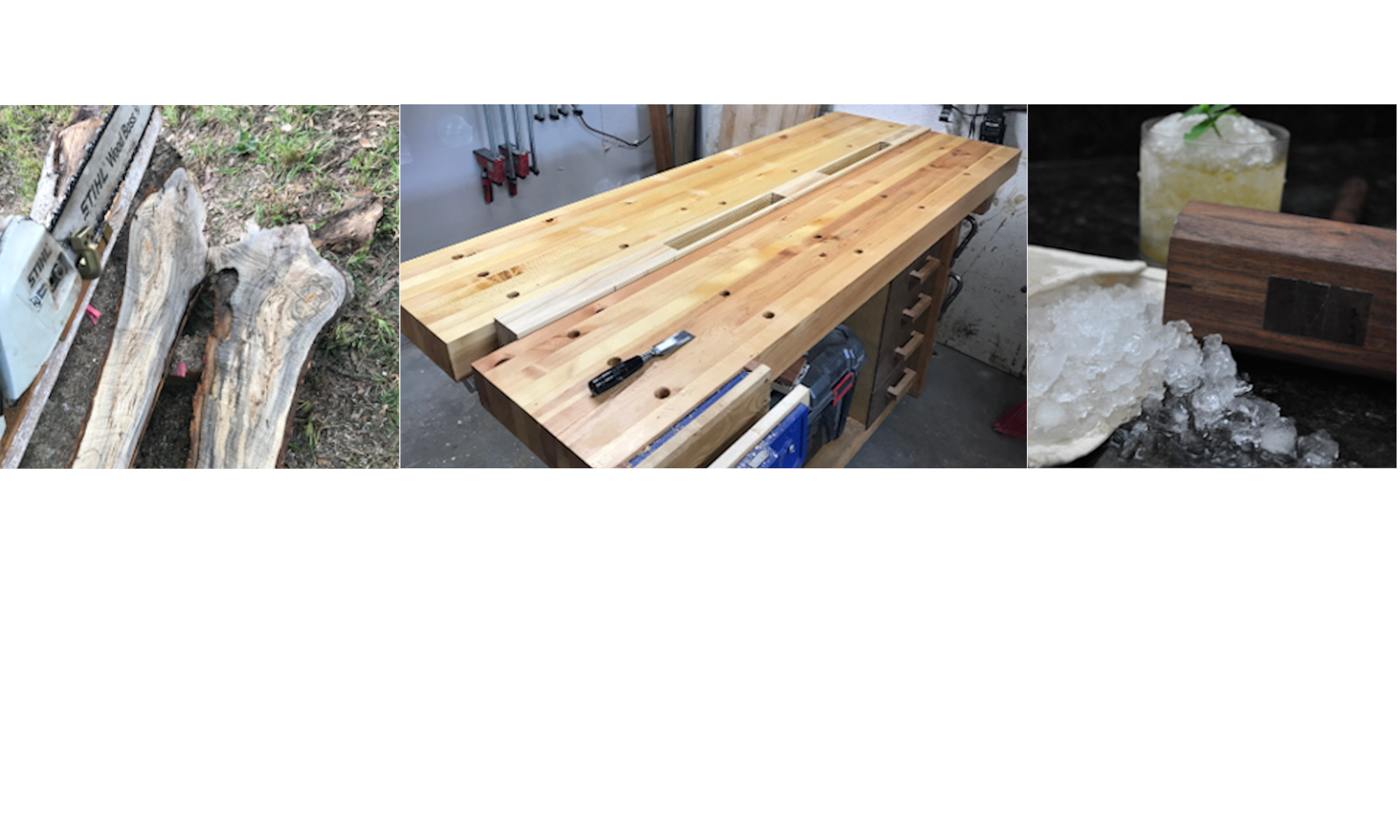Skiff Building – Setting up the Molds and Installing Garboard Planks
In the last newsletter we talked about attaching the molds to the strongback and building some of the first components that help provide the structure for planking. These parts include the inner stem and stem knee. The stem on this boat has two parts, an inner and outer, split at the back rabbet, negating the need to carve a rabbet (see week 3 for rabbit carving details). The longitudinal components installed at this point are the chine logs on each side and the apron down the center. Both of these parts are milled from Sapele, an African hardwood. Some of the bevels for these pieces are cut prior to installation based off the lofting and others are done once the pieces are on the boat. The white oak transom, located at the stern, is made from a number of white oak planks glued together with splines. The part is cut from a lofting pattern and installed at the correct height and angle. It is attached to the longitudinal apron and chine logs. The top or bottom of the transom, depending on your reference point (the boat is upside down) is left long to be trimmed later to allow for installation of an outboard engine.



Through bolts to be added later



Through bolts will be added later


This boat is designed for lapstrake or clinker style planks where the top plank overlaps the one below. The side planking material is 1/2” thick cedar, the boards we are using are about 12” wide. The process to determine where all the planks will be located is called lining out. Battens are strung along the molds representing the overlap of each plank, the purpose is to make sure the spacing of the planking is pleasing to the eye. Next the garboard blank is “offered up” to the boat and clamped in place. We used the chine logs and our reference marks from the lining out process to determine the shape. Once the shape is is confirmed, the process involves offering the plank to the boat multiple times slowly trimming away material each time to get the shape exactly correct (skill and experience will expedite this process). Once we are satisfied with the shape we add the gains in the bow, bevel along the length and the ship lap in the stern. This joinery is characteristic in a lapstrake boat and is how the garboard plank interfaces with the next plank. This will make more sense when the subsequent planks are attached. We added a modern touch to our boat, sika flex, which is a flexible adhesive that will help reduce the potential for leaks. The plank is attached to the stem, chine log and transom using bronze screws.








Battens represent the planking overlap
Next Quarter
The school is structured into quarters where shop time in the first quarter focuses heavily on wood working. Fall quarter is coming to an end and it is time to start discussing projects for the subsequent quarters. I like the way this school is structured, in that they have so many different and interesting projects going on at the same time. For 2022-23 there are 15 boats (including the skiffs we started this quarter) that will either be completed or started (some of which i have shown in previous newsletters). Placement will be a lottery system where we choose our top 3 projects and then we are assigned based on workload and interest. So many cool projects to choose from.


So many choices.. Looks like each will offer new skills and challenges.
I don’t think I can go wrong. 🙂